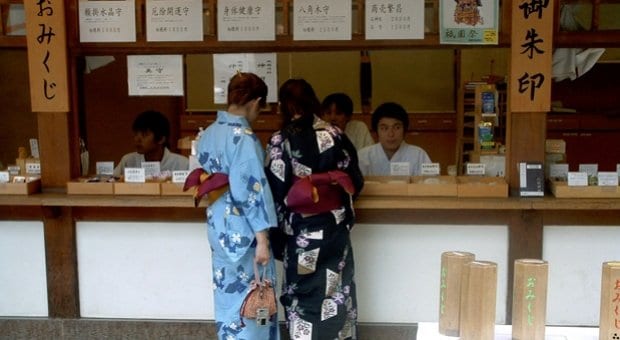
Shoppers in Kyoto. Credit: Aefa Mulholland
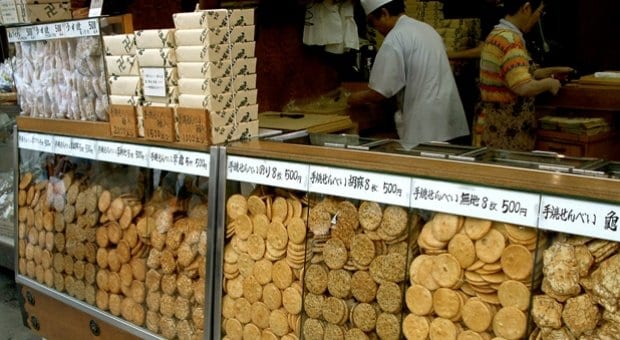
Asakusa market in Tokyo. Credit: Aefa Mulholland
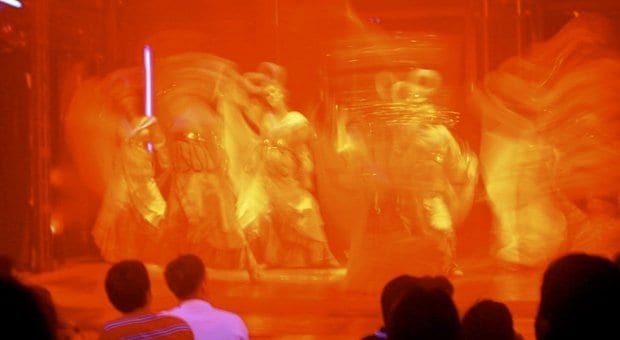
Kingo club in Tokyo. Credit: Aefa Mulholland
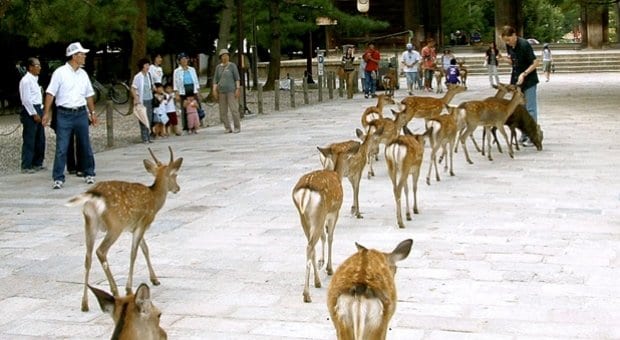
The voracious holy deer in Nara. Credit: Aefa Mulholland
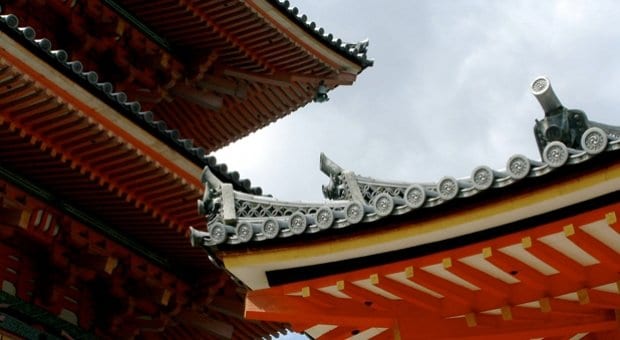
Temple roof peaks in Kyoto. Credit: Aefa Mulholland
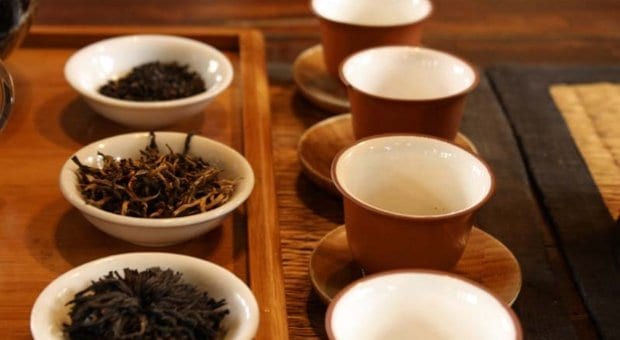
Tea ceremony in Osaka. Credit: Aefa Mulholland
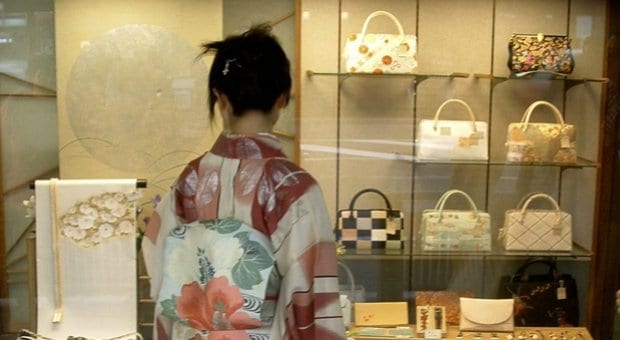
Window shopping in Kyoto. Credit: Aefa Mulholland
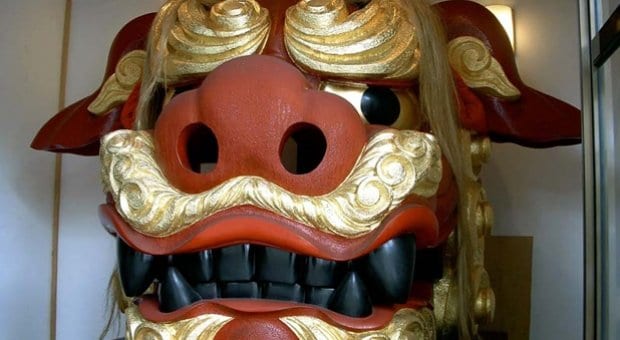
Shrine in Tokyo. Credit: Aefa Mulholland
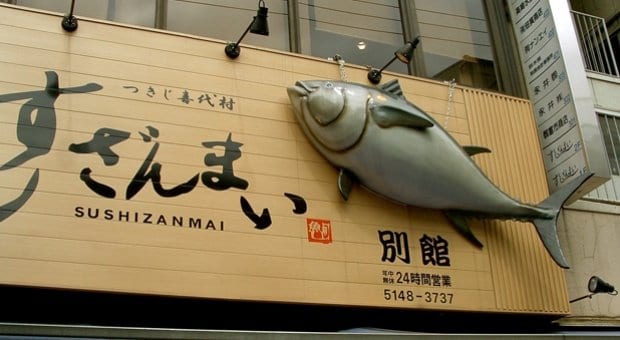
Tsujiki Fish Market in Tokyo. Credit: Aefa Mulholland
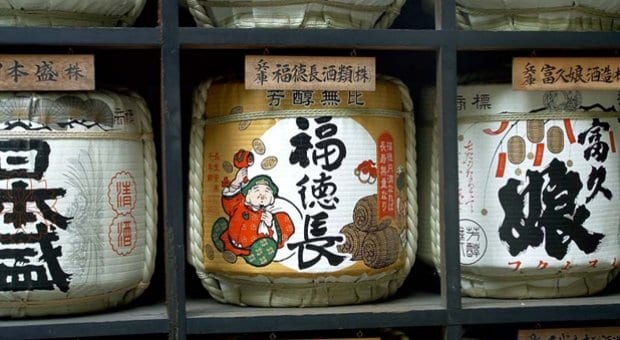
Meiji shrine in Tokyo. Credit: Aefa Mulholland
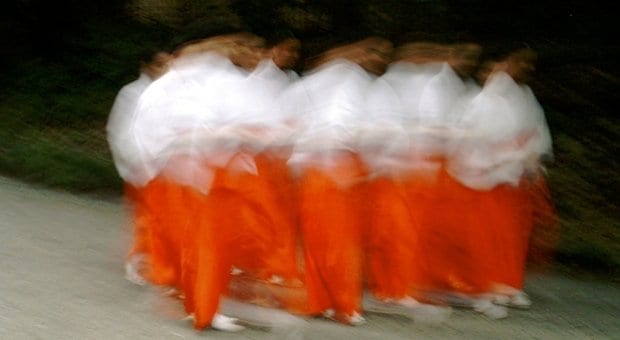
Nuns at Meiji Shrine in Tokyo. Credit: Aefa Mulholland
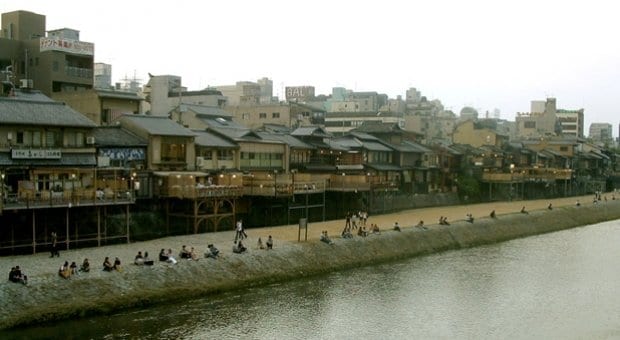
Riverbank restaurants in Kyoto. Credit: Aefa Mulholland
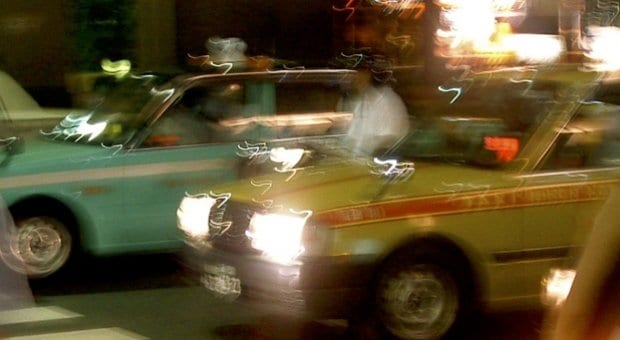
Taxis on the fly through Tokyo. Credit: Aefa Mulholland
Japan offers a cacophony of contrasts, from fast-paced to gently relaxing, chaotic to calm. In this land of bullet trains and bucolic shrines, love hotels and traditional ryokan inns, riotous colour gives way to rice paddies as the Land of the Rising Sun maintain its extremely modern cutting edge alongside millenniums-old traditions.
Tokyo
Tokyo’s sheer energy and exuberance is irresistible. Two-tone taxis blur by in a colourful stream of orange and blue, blue and yellow, yellow and turquoise. Pachinko game parlours chirp incessantly steps from shrines and Zen rock gardens. Tokyo was built in a spiral around the Imperial Palace to confuse enemies, making it a maze. Buildings are numbered — but not necessarily logically. Bars and hotels issue business cards with maps, which are useful; taxi drivers don’t like to admit when they’re lost.
In between the glaring neon and amusement arcades of Kabukicho and the shiny cloud-scraping towers of the municipal offices shines Shinjuku Ni-Chome. A Shinto shrine, bookstores, numerous expensive fruit stores and more than 200 LGBT bars lurk in Ni-Chome’s alleyways and narrow side streets. Many bars are not much bigger than the average cereal packet, barely big enough to cram in a counter and a scatter of sake glasses. These spare-bedroom-sized bars crowd on top of each other, often several to a landing, with towers of neon signs on building exteriors luring custom.
While only the truly talented should contemplate reaching for the microphone in bars — the Japanese take public karaoke extremely seriously — fans of Lost in Translation shouldn’t miss out on the phenomenon of the karaoke box. Facilities such as Shidax in Shibuya offer private rooms with dancing poles, tambourines, microphones, drinks and, for those with Japan Airlines frequent-flyer cards, the ability to incur miles as you warble.
In Akihabara electronics district, banks upon banks of screens chatter, sing and beg passersby to acquire new technology in every colour you could ever dream of. A moratorium means that gadgets the likes of these won’t make their way to markets abroad for three years.
At the other end of the technology spectrum, bright red boxes spit out fortunes alongside monkey deities at the Hie Shrine. Other Tokyo shrines at which you can pay your respects include the five-storey Shinto pagoda in Asakusa district and the atmospheric Meiji Shrine.
When it comes to Japanese food, sushi isn’t even the seagull perched on the tip of the iceberg. For those who previously called a halt to their exploration of Japanese food at California rolls and bento boxes, the variety is mind-boggling. Tokyo tantalizes with okonomiyaki (DIY table-grilled pizza pancakes), shabu-shabu (flash-cooked beef), yakitori, robata grills, udon, tempura and chirashi-zushi. Sushi, of course, is fresh and fabulous in eateries around Tsukiji fish market. The 60-acre market is a chaotic melee of hurtling electric carts, the smack of blades hitting the morning’s catch, bright red tentacles, rainbow-striped shrimp and a disconcerting amount of whale blubber.
Fashion runs a gorgeous gamut from occasional sightings of kimono-clad socialites to designer names, schoolgirl chic, punk and goth. With 32 million people calling Tokyo home, every subculture is well represented. Issey Miyake and Prada stores abut each other on famed streets Omotesando and Aoyama. Young, hip shoppers flock to Harajuku and the small designer stores of Shibuya. Tokyo specializes in department stores the size of medium-sized American states, such as the colossal Takashimaya Times Square. Shopping in these stores can be an unforgettable experience. Buy yourself a melon and find yourself $20 poorer but the proud bearer of an official stamp and a certificate of authenticity.
For the most up-to-date travel information on gay Toyko, see our City Guide, Listings Guide, Events Guide and Activities Guide.
Osaka
Japan’s second city is home to nearly nine million people. This bold, confident and vibrant city is the ideal base for exploring western Japan’s Kansai region — home to Kyoto’s temples, shrines, Geisha district and character-laden alleyways, Nara’s voracious holy deer and vast Great Buddha and the holy mountain town of Mount Koya, all within 90 minutes of downtown Osaka. All three destinations are easily accessible by fast, safe and efficient public transport. Adding even more to Osaka’s appeal as a Kansai base are various architectural gems, excellent shopping, world-class restaurants, vibrant nightlife and a stylish and attractive (both male and female) population. In fact, the Japanese say that the most handsome people migrate to Osaka.
The gay quarter around Doyama is, unsurprisingly, on a smaller scale than megalopolis Tokyo but offers more than 20 bars for men, an enticing handful for women and an array of club nights that welcome visitors. Many of the cozy and intimate (ie, tiny) bars actively court Western clientele.
Osaka is renowned as “the blowfish capital of Japan,” as the city has the country’s highest per capita consumption of the Russian roulette dish. At the other end of the adventurous eating scale, Osaka can also claim to be the birthplace of the instant noodle and even has a museum dedicated to these culinary marvels.
Osaka grew around Shogunate Nijo Castle, the rebuilt version of which stands in spacious parkland, along with a museum and concert hall. The Floating Observatory, an observation deck joining the two halves of the Umeda Sky Building at a height of 170 metres, provides views of the city and a popular spot for dates via a terrifying glass-walled elevator ride.
Kita is Japan’s largest shopping area. Shinsaibashi is Osaka’s main shopping street, home to department stores and specialty stores aplenty. It is also home to the Sony Tower, nine floors of all things electronic and futuristic. Other major shopping experiences are to be had at the HEP Five mall, where a vast Ferris wheel cuts through the upper floors of this 150-store emporium, and Muji, the temple of simplistic Japanese products.
Kyoto
Surrounded by cultivated mountain terraces, only Rome has more designated World Heritage Sites than Kyoto. The site of the Japanese capital for 1,000 years is a city of 1.5 million and one that, having escaped the bombings of the Second World War, has a stunning array of still-intact temples and shrines. The best known is Kinkaku-ji, the Golden Pavilion, which sits in a pond, blooming lotuses like confetti in its reflection. In the eastern Higashiyama district, a winding street leads up a steep hill to the bright orange tori gate of Kiyomizu-dera temple. Translating as “Pure Water Temple,” this Buddhist complex set against forested hills dates back to the year 778.
On bustling Shijo Street, wooden storefronts attract window shoppers in kimonos. Along the Kamo River, terraces fill with people eating, toasting and drinking sake as the sun sets. Around them you’ll find a maze of traditional wooden houses, known as “houses for eels” on account of their slender length. As twilight creeps in, paper lanterns glow from doorways and from behind tatami screens, hinting at the life inside.
Read more about Japan in our travel feature “Hidden Japan.”
Okinawa held its first Pride celebration in 2013.
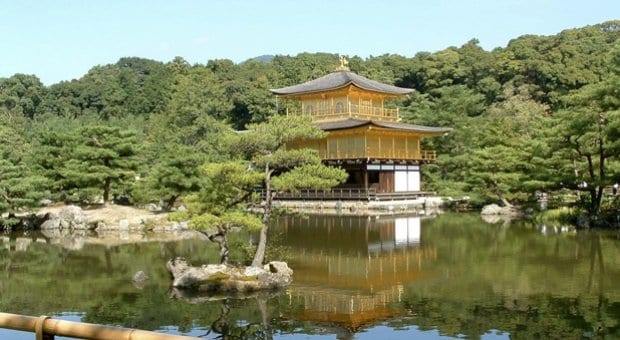
 Why you can trust Xtra
Why you can trust Xtra